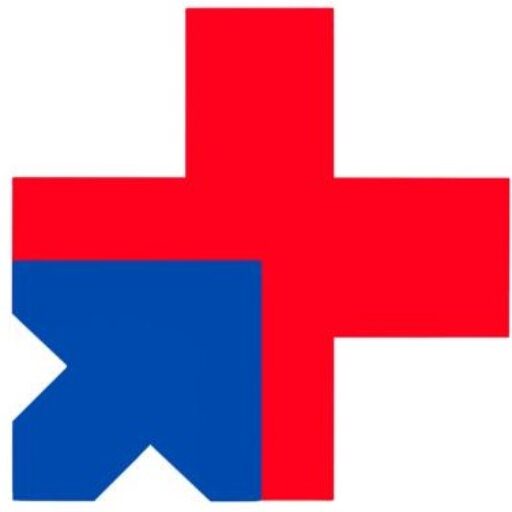The supraclavicular lymph nodes are important for the immune system. They are located just above the collarbone and help filter lymph fluid and fight infections. These nodes can drain areas from the neck down to the thorax and abdomen, making them useful indicators of various health conditions.
This article explains why it’s important to pay attention to changes in the supraclavicular lymph nodes. Sometimes, swelling in these nodes can be a sign of cancer spreading from other parts of the body (metastasis). Since this connection to serious health problems exists, it’s valuable to know how to check these lymph nodes yourself.
In this article, we’ll provide an easy-to-understand guide for examining your supraclavicular area. Being able to identify early signs of enlargement could be crucial for getting medical help quickly and improving your health.
What are Supraclavicular Lymph Nodes?
Supraclavicular lymph nodes are located above the collarbone in the supraclavicular fossa. They play a crucial role in the body’s lymphatic system by filtering lymph fluid from areas such as the chest, abdomen, and arms before it goes back into the bloodstream. What makes these nodes important is that they drain parts of the thorax and abdomen, making them key locations for detecting internal cancers.
The Significance of Virchow’s Nodes
Virchow’s nodes are a specific group of supraclavicular lymph nodes located on the left side of the body. They are named after Rudolf Virchow, a German pathologist who first described them. What sets these nodes apart is their direct connection to internal organs through lymphatic drainage.
When cancer cells break away from their original tumor site, they can travel through the lymphatic system and cause these strategically positioned nodes to enlarge. This is why Virchow’s nodes often indicate advanced malignancies if they are swollen.
Understanding Metastasis
Enlargement of Virchow’s nodes is strongly associated with several types of cancer, including gastric, ovarian, testicular cancer, and Hodgkin’s lymphoma. In these cases, it may be a sign that cancer has spread from its original location to other parts of the body—a process known as metastasis.
The Importance of Paying Attention to Enlarged Supraclavicular Lymph Nodes
While not all cases of enlarged supraclavicular lymph nodes are caused by cancer, it is still important for individuals to be aware of any changes in this area and seek medical evaluation promptly. Physicians pay special attention to this symptom as it can sometimes be a warning sign of underlying health issues that require further investigation.
Detecting Supraclavicular Lymph Nodes Early
Detecting changes in supraclavicular lymph nodes at an early stage plays a pivotal role in the management of both non-cancerous and cancerous conditions. Timely identification of abnormalities can lead to early intervention, which is essential for several reasons:
- Improved Prognosis: When malignant conditions are diagnosed early, treatment options may be more effective, potentially leading to an increased survival rate.
- More Treatment Options: Early detection often means more treatment possibilities are available, some of which may be less invasive and have fewer side effects.
- Reduced Complications: Addressing lymph node abnormalities promptly can prevent the progression of diseases, which in turn can reduce the risk of complications.
In the context of benign disorders affecting supraclavicular lymph nodes, early detection can result in quicker relief from symptoms and faster resolution of the underlying condition. For malignancies, identifying lymph node enlargement early on is particularly crucial because it can signify metastasis. Given that supraclavicular lymph nodes receive drainage from various parts of the body, their enlargement might be the first sign pointing to a serious internal condition.
Early detection allows for timely medical advice and diagnostic testing, which could include further imaging or biopsy. This enables healthcare providers to determine the cause accurately and develop a tailored treatment plan aimed at improving health outcomes.
How to Check for Enlarged Supraclavicular Lymph Nodes

Checking for enlarged supraclavicular lymph nodes involves a palpation technique that can be performed at home. Here’s how to conduct a self-examination:
Step 1: Locating the Supraclavicular Lymph Nodes
- Find the supraclavicular fossa, an indentation located just above the clavicle (collarbone).
- The lymph nodes are situated deep within this area.
Step 2: Preparing for the Palpation
- Ensure your hands are clean and warm to avoid discomfort.
- Relax your shoulders to make the area more accessible.
Step 3: Performing the Palpation Technique to Assess the Supraclavicular Lymph Nodes
- Gently use your fingertips to probe the area.
- Apply slight pressure in a circular motion, feeling for any lumps or swelling.
- It is essential to compare both sides for symmetry.
Step 4: Interpreting Findings and Understanding What is Considered Abnormal
- Normal lymph nodes are usually not palpable; however, if you feel a lump, note its size, texture, and whether it’s fixed or movable.
- Nodes that are hard, larger than 1 centimeter, or immovable require prompt medical attention.
Step 5: Seeking Medical Advice if You Notice Suspicious Changes
If you discover any unusual changes or persistent swelling, seek advice from a healthcare professional for further evaluation.
To palpate supraclavicular lymph nodes effectively:
- Remain calm and methodical throughout the process.
- Using a mirror can help ensure you cover the entire region adequately.
Other Methods to look for Supraclavicular Lymph Nodes
While palpation is a useful initial method to check for enlarged supraclavicular lymph nodes, it has limitations. For a more thorough evaluation, healthcare providers often turn to advanced diagnostic imaging techniques. These methods provide detailed views of the lymph nodes and can help in determining the cause of enlargement more accurately.
Imaging Techniques Used in Evaluation:
- Ultrasound: A non-invasive procedure that uses sound waves to create images of structures within the body. It can reveal the size, shape, and consistency of supraclavicular lymph nodes, which are helpful indicators of their condition.
- Computed Tomography (CT) Scan: Offers cross-sectional images of the body using X-rays. This scan provides a more comprehensive picture, showing the lymph nodes’ relation to other structures and any signs of disease that might not be evident through physical examination alone.
- Magnetic Resonance Imaging (MRI): Utilizes magnetic fields and radio waves to produce detailed images. Although not as commonly used for lymph node assessment as CT scans, MRI can provide valuable information about the tissue composition of the nodes.
- Positron Emission Tomography (PET) Scan: Often combined with a CT scan (PET-CT), this test uses a radioactive substance to look for disease in the body and is particularly useful in identifying cancerous cells within lymph nodes.
These imaging tests are critical when cancer is suspected because they can detect abnormalities that suggest malignancy or other serious conditions. They also play a vital role in staging cancer by showing whether it has spread to the supraclavicular lymph nodes or beyond.
By integrating these imaging methods with physical examination findings, medical professionals can diagnose conditions with greater confidence and develop targeted treatment plans.
Common Causes of Supraclavicular Lymph Node Enlargement
Swollen supraclavicular lymph nodes can be alarming due to their association with serious health conditions. Various causes, ranging from benign to more serious, can lead to this enlargement. Understanding these factors is essential for interpreting changes and deciding on the appropriate course of action.
1. Infections
Bacterial or viral infections are common reasons for lymph node enlargement. Conditions such as tuberculosis or mononucleosis can cause the lymph nodes to increase in size as they filter out pathogens and mount an immune response.
2. Inflammatory Diseases
Autoimmune disorders like lupus or rheumatoid arthritis often result in swollen lymph nodes due to chronic inflammation throughout the body.
3. Primary Malignancies
While less common, cancers that originate near the supraclavicular area, such as lung or breast cancer, may directly affect these lymph nodes.
4. Metastatic Cancer
The presence of metastasis from distant organs like the stomach, ovaries, or testicles could lead to enlarged supraclavicular lymph nodes. The left-sided nodes or Virchow’s nodes are particularly noteworthy indicators of metastatic abdominal cancers.
Identifying the specific cause behind swollen supraclavicular lymph nodes requires careful evaluation and often additional diagnostic tests. If you experience persistent swelling in these areas without a clear cause, it’s important to seek medical advice for a thorough assessment.
While infections and inflammatory conditions are frequently treatable, early detection of malignancies is critical for effective treatment. Recognizing the diverse causes behind enlarged supraclavicular lymph nodes empowers individuals with knowledge that aids in timely medical consultation and intervention.
Supraclavicular Lymph Node and links to Cancer
When supraclavicular lymph nodes become enlarged, it often triggers concern due to the associated risk of cancer. The prevalence of malignancy in these cases is significant and warrants attention. Research literature points to a higher incidence of cancerous causes behind the enlargement of these lymph nodes compared to other regions.
Key Points about Supraclavicular Lymph Nodes and Cancer
- Supraclavicular lymph nodes serve as a critical checkpoint in the body’s lymphatic system, trapping and fighting off harmful substances.
- When they swell, it can indicate a localized issue or something more systemic, such as cancer.
- Virchow’s node, particularly on the left side, has historical ties to gauging the presence of internal organ malignancies.
- Studies suggest that an enlarged Virchow’s node can be one of the earliest signs of stomach, ovarian, or testicular cancer, among others.
The data underscores why medical professionals regard swelling in this area with particular scrutiny. An enlargement doesn’t always equate to cancer — infections and other benign conditions can also cause similar symptoms. However, due to the prevalence of malignancies found during evaluations, any change in this region is taken seriously.
Importance of Prompt Evaluation
If you notice any swelling or enlargement in your supraclavicular lymph nodes, it’s important to seek medical attention promptly. While it may not always indicate cancer, timely evaluation can help identify any potential issues and ensure appropriate management.
Diagnostic Approach for Supraclavicular Lymph Node Enlargement
Next steps after discovering an enlargement involve a careful and comprehensive approach to diagnosis. This includes palpation but also might involve advanced imaging techniques and biopsies to accurately determine the cause.
Conclusion
Regular self-examination is crucial for detecting any changes in supraclavicular lymph nodes early on, which is essential for prompt medical attention. Being able to identify any abnormalities in these nodes can be a significant indicator of health issues, especially since they are linked to various conditions, including potentially life-threatening cancers.
It is important to emphasize the importance of incorporating regular self-checks into one’s routine as a way to stay proactive about personal health. If any unusual changes or swelling in these lymph nodes are noticed, it is imperative to seek immediate medical advice for a thorough evaluation and appropriate next steps. This proactive mindset can lead to better outcomes and serves as a responsible approach to managing one’s well-being.
Read More: Best Antihistamine Eye Drops Tested for 2024


